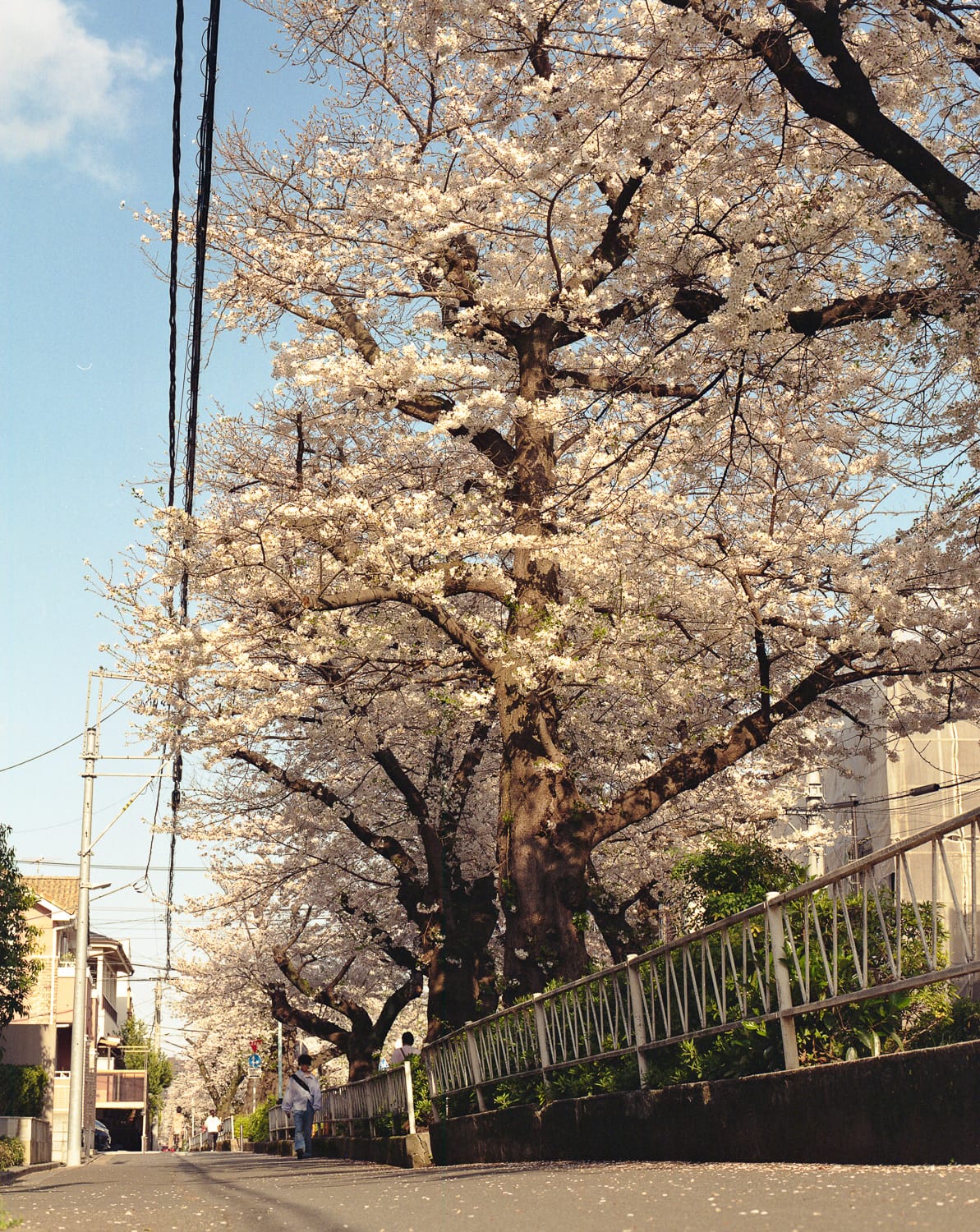Sunny sakura season
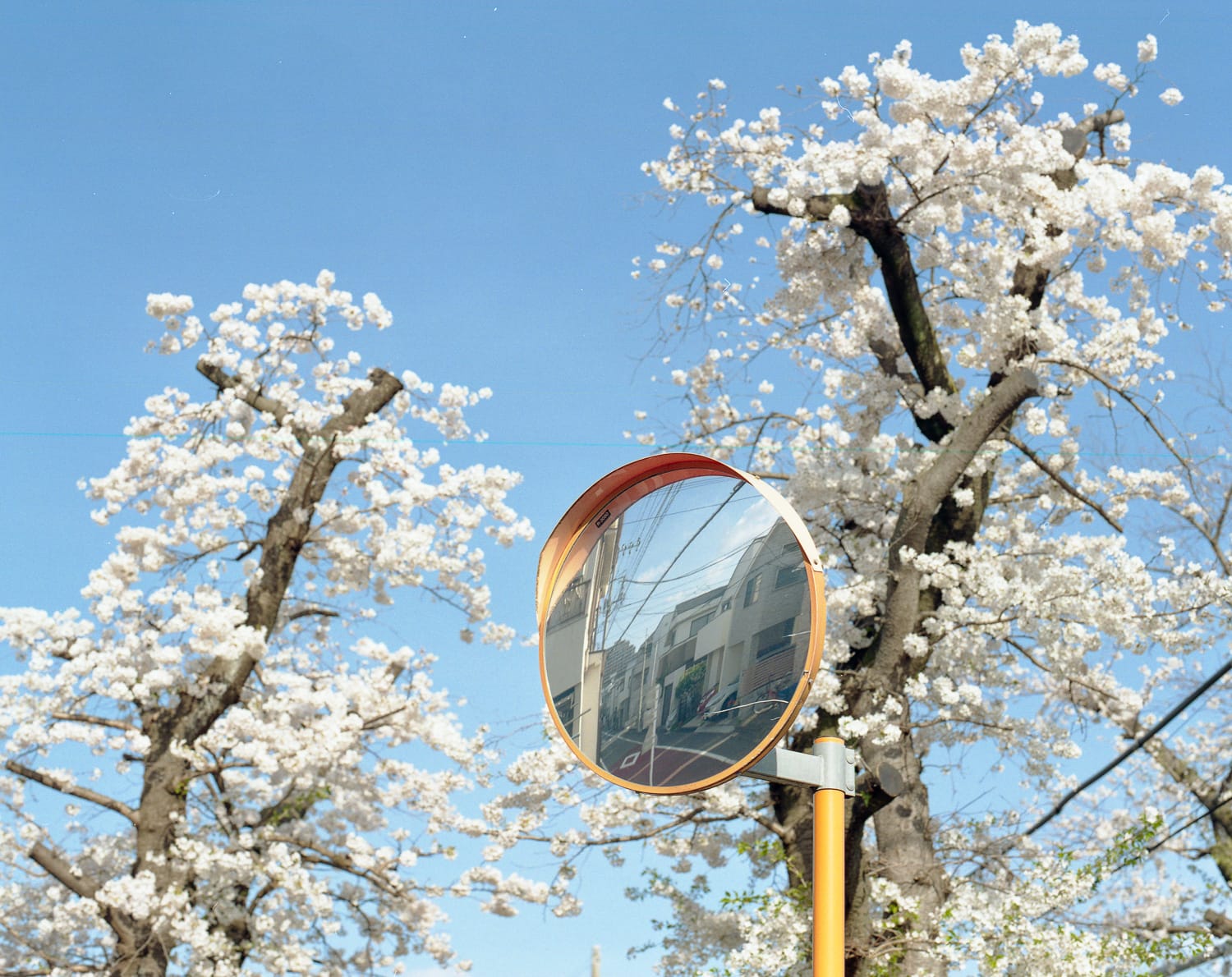
I know, I know - It’s been a while since the last update on here. Even this post about this year’s sakura season comes a mere two months after the fact. Hear me out, there is a reason for this. It simply took ages to get these photos developed.
Unfortunately, film photography in 2024 is becoming increasingly cumbersome, even in Tokyo. When I came to Japan five years ago, there were a number of camera stores that would offer 1-hour film development services. These days, you are lucky to receive the images on the same day. Believe it or not, developing the roll of medium-format film with the pictures in this post took more than two weeks.
Sure, you find locations of Japan’s biggest chain of photo stores Kitamura Camera at almost every major station. But while they sell various types of film stock, the in-house development service is limited to the most common 35mm rolls. Everything else is presumably sent to a central development lab somewhere in a remote region of Hokkaido (judging by the turnaround time).
If only Japanese homes came with a basement that could house a makeshift darkroom…
Anywho, after last year's cherry blossom was a pretty rainy affair here in Tokyo, we got more lucky this time around. The sakura forecast even predicted an unusually early bloom, due to the extremely mild winter. However, two weeks of near-constant rain in late March dashed those hopes. Fortunately, once the buds opened, the skies cleared as well, setting the stage for ideal hanami conditions.
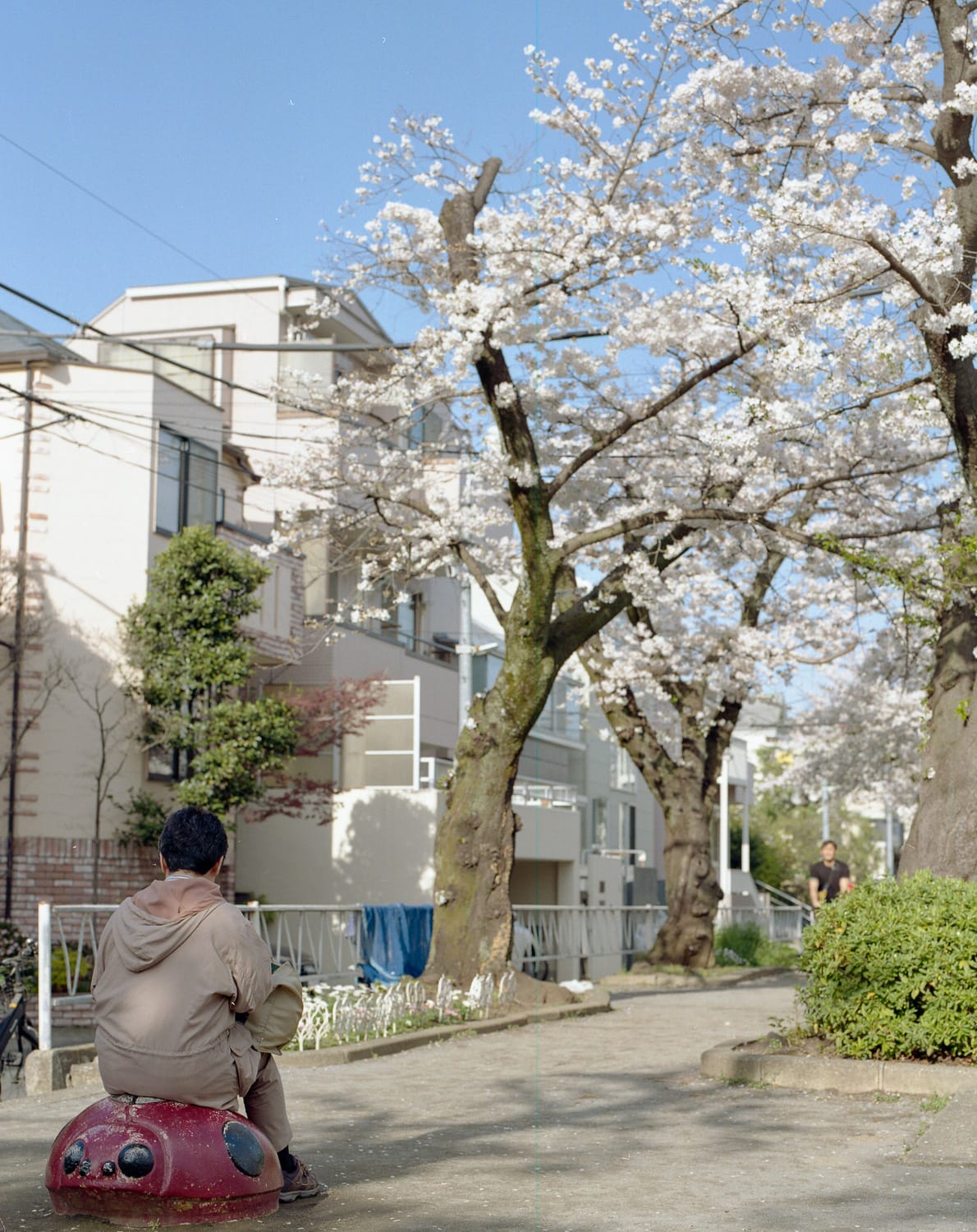
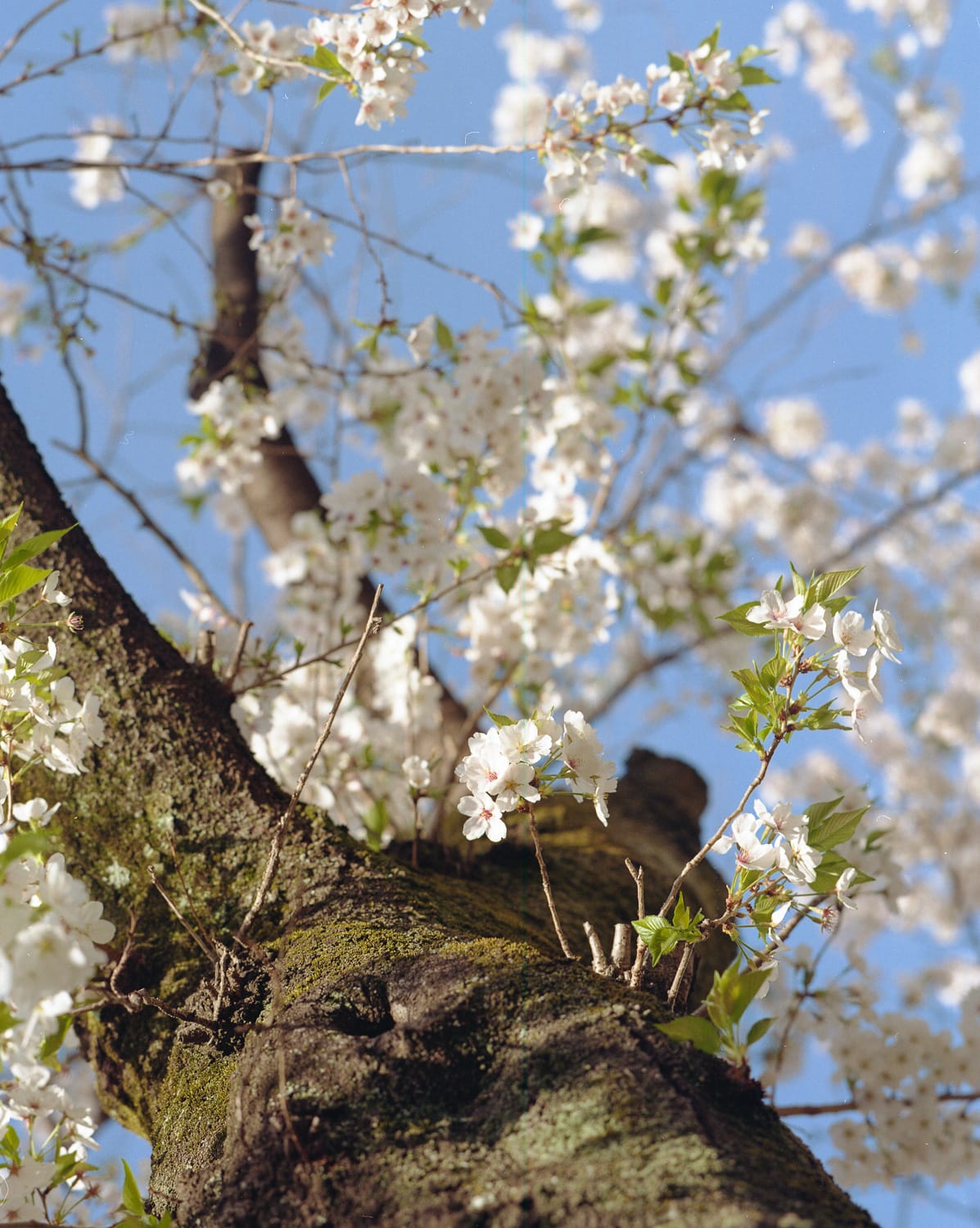
What better way to capture this spectacle than with the trusty Mamiya RZ67? This time, I tried Kodak Gold 120 for the first time – a consumer-grade film that I did not know was available for medium format cameras. Usually, one would use professional film stock, such as Porta or Ektar. Nonetheless, I was pleasantly surprised with the clarity and color rendition of the resulting images.
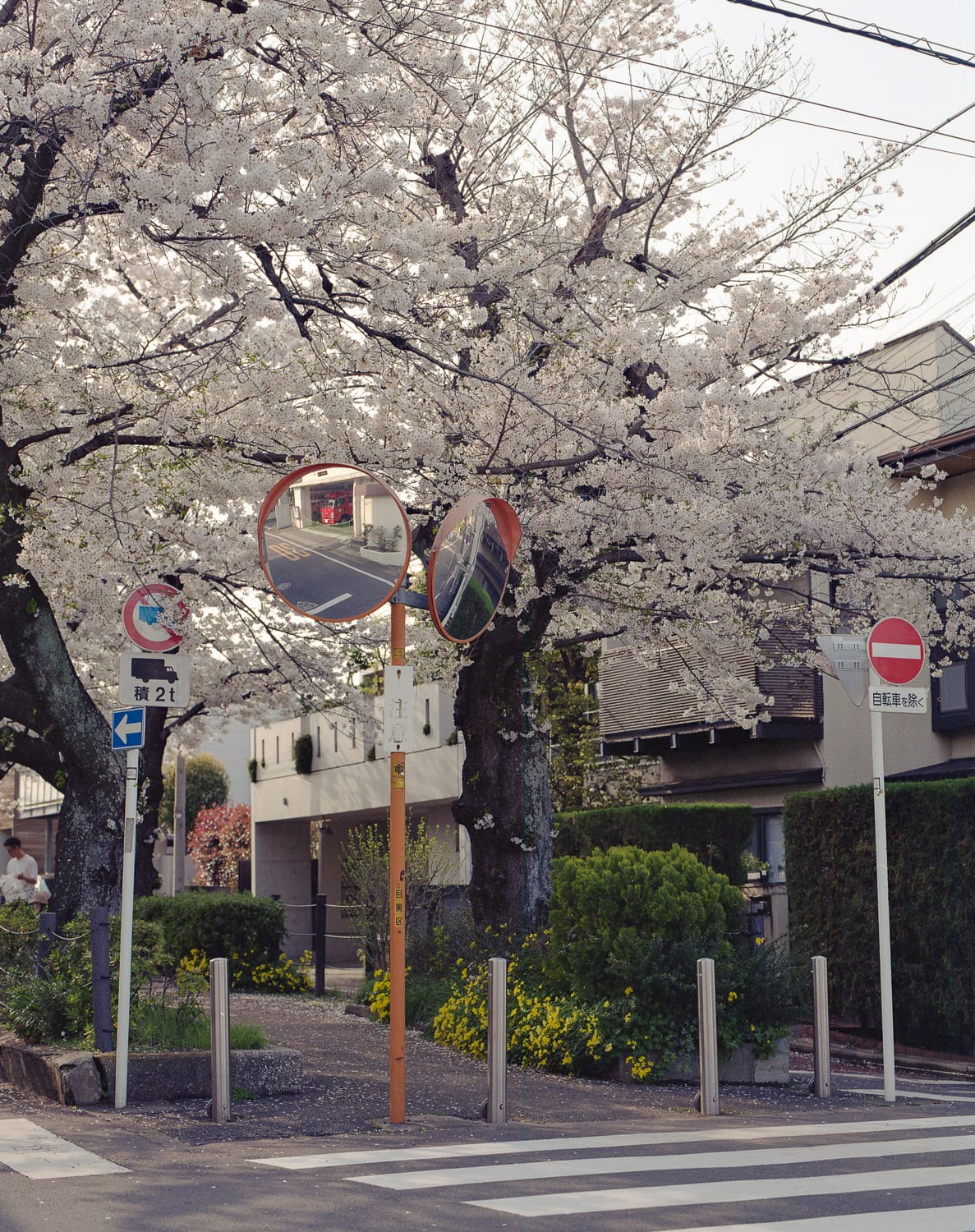
These photos were taken in a green alley near our home in Setagaya, stretching from Sakura-shimmachi all the way to Toritsu Daigaku. From the fascinating book Emergent Tokyo, I recently learned that this is an example of a so-called 'ankyo street' – winding green paths that trace hidden (i.e., paved-over) rivers running through Tokyo. Apparently, the number of waterways in the city once rivaled that of Venice. Although today, sadly, you would not be able to tell. There are a few notable exceptions, such as the Shibuya River and Meguro River, but most of them were either intentionally covered up or dried up over the course of the 20th century. At least these ankyo streets remain in a few pockets of Tokyo, and sometimes you can even hear the stream flowing beneath the concrete.
For more information on these ankyo streets, check out The Tokyo Files which featured some great info including a handy map for reference a few years back.
